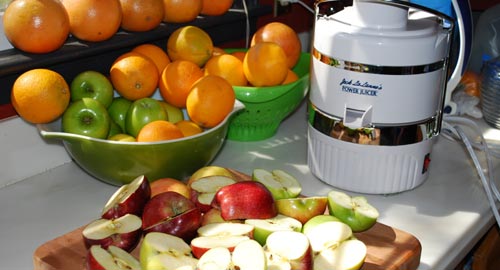The most difficult cleanse for newbies is the juice fast. It requires a great deal of preparation and produce, as well as specialized equipment. Juicers are an investment, and you want to be sure that you’re getting the most for your money within your price range.
It doesn’t help that on Amazon.com, all three juicers I’ll review today have the exact same rating of four out of five stars. Given that they’re all so different, they couldn’t be equally effective in all areas!
However, juice fasting is the best way to give your digestive system a chance to heal and recuperate, as well as getting tons of necessary nutrients to the cells quickly. It’s worth the effort. These reviews and recipes should make it easier to make a choice and then make it happen!
If you can’t afford a juicer right now, skip the reviews and go to the recipes. I’ve got a couple of tricks if you own a blender. It’s not perfect, but certainly still serviceable!
Juicer Comparison
There are three juicers that I have experience with, and they all have different price ranges and functions. I’ll skip the most popular (
If you’re looking to do a one-time juice fast, get the Breville. It does an adequate job, and it’s the cheapest. However, if you’ve been visiting your local health food store for fresh juices frequently and know that you love how you feel when you have them, it might be smart to invest in the Hurom.
You can also make juices in your blender, you’ll just have to put in some elbow grease. I’d suggest getting several packs of cheesecloth (or nut milk bags), because you’ll need it. Blend your “juice” as you would normally make your smoothie.
Place cheesecloth into a colander and place that colander over a bigger bowl. Pour the smoothie over it, and allow to drain. I’d suggest skipping a metal bowl, as you don’t want metallic juice.
This may take a few minutes to several hours, so feel free to put it in the fridge and check on it later. When all has drained through, twist the cheesecloth to wring out the excess liquid, then enjoy your juices. You’ll also want to peel the produce to avoid straining out more fiber than necessary.
DON’T TOSS THE PULP! Use it as a base for crackers, raw carrot cake, or homemade cole slaw (though I prefer vegan mayo on a cleanse, or better yet, olive oil and apple cider vinegar). There are tons of ways to use that pulp, so don’t let it go to waste!